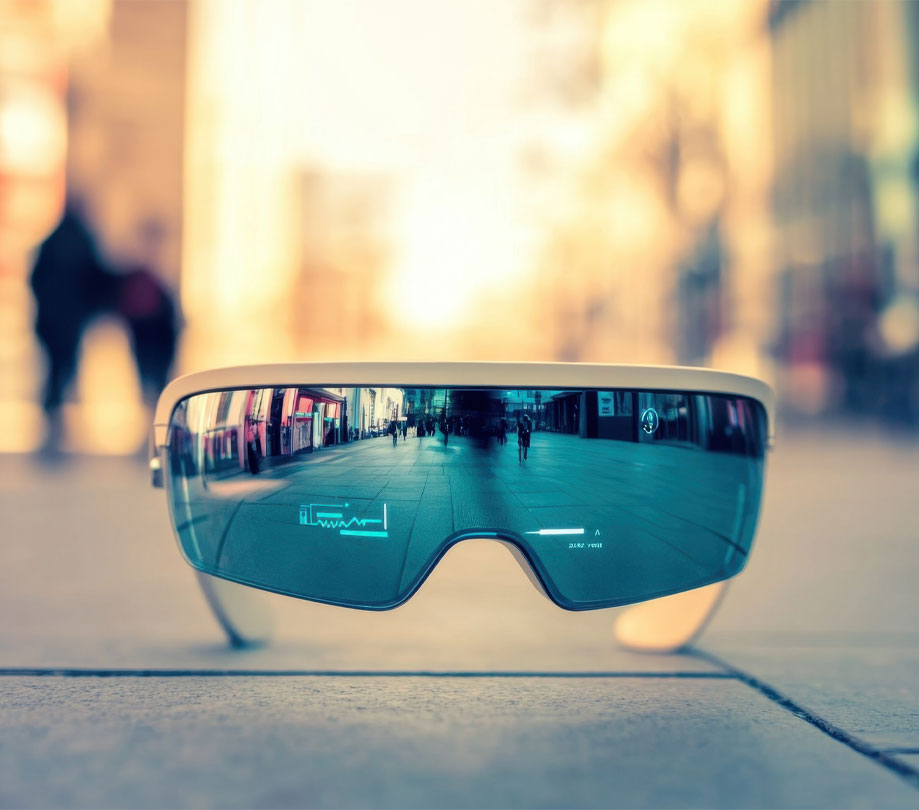Augmented Reality
The Future of AR in mobile apps
Tuesday, May 30, 2017

|
Richard Harris |
A Q/A on AR's role in mobile applications and how it will affect the industry.
Augmented reality: the shiny new toy that every company wants to get their hands on and be a part of. Since Facebook launched its AR platform a few weeks ago at F8, augmented reality has now become the standard in which companies must reach to achieve complete consumer interaction.
While there is still a lot to discover and unleash when it comes to the capabilities of AR, a variety of industries are currently utilizing this technology for various reasons including brand engagement, educational purposes, scientific research and of course mobile applications.
One company who is excited to see this trend come to fruition is TIPIT, a cross-platform engine that delivers computer vision and AR technologies to messaging platforms, developers, social platforms, and brands who are looking to deliver revolutionary user experiences. We sat with CEO and co-founder, Jonathan Rimon, since he is seen as a thought leader in this space as he spent over 10 years as an engineer, reviewing the AR life cycle since the beginning. Take a look at what he had to say:
Rimon: Today, augmented reality has kicked off tremendously across different platforms. With huge players such as Facebook, Apple, and Snapchat bringing this technology to light, one place that stands out the most is mobile applications. Everyone wants to be the next Pokemon Go. Brands see the success which AR brings if done correctly, so with this popularity comes the urgency to create the next best thing.
Rimon: AR has started to immerse itself into the mobile space via cameras. Consumers are actively using their mobile cameras across all social media platforms which make this an AR goldmine! Video and photo filters such as the dog animation on Snapchat spread like wildfire across every platform. The race to create the best new filter or animation is on between Facebook and Snapchat which means more opportunities for brand engagement.
Rimon: The future is very promising for developers when it comes to AR. Developers look forward to the day that AR becomes mainstream and compatible through multiple channels for multiple areas such as productivity, teaching, entertainment, beauty and more.
Rimon: Aside from the obvious social media craze, brands in the retail space are benefiting from AR by being able to place products in front of customers in real time. For example, IKEA is utilizing AR to allow their customers to view how a couch will look in their living room prior to purchasing it. This capability brings the value of the app up as more customers will be inclined to download it to experience the same type of engagement.
Rimon: As I mentioned early, Facebook really lit a match under other big players to jump on the AR train. AR will become a standard in every app which includes photo and videos, just as after Instagram launched, every camera began to add filters.
Rimon: We created SOLO and Model to announce to the world that we have unique AR and photo/video editing capabilities. They are part of our larger marketing strategy to show that these tools are accessible for everyone today and anyone can create their own with our AR and image processing graphics studio, TIPIT. We also wanted to make products that are affordable for developers.
Rimon: Innovation and its original foundation of AR functionalities. Solo was the first app that enabled accurate and instant background separation, in addition to full body effects. Model is the first photoshop tool with advanced graphics that are realistic.
Rimon: One of the biggest challenges is that the technology is not easily accessible to consumers and business. To truly mainstream the success of AR, the technology must work across as many technological platforms as possible i.e., iOS, Android, Windows, Linux, etc. This is exactly what TIPIT Technologies is trying to accomplish. For example, the enormous commercial success of smartphones was significantly enabled by the democratization of App Stores and the underlying software SDKs which enabled developers to create whatever they imagined. Most developers do not have PhDs in math and computer science - progress happens when technology becomes easily encapsulated for developers to use and create amazing applications for their end users.

Jonathan Rimon is a co-founder and the CEO of TIPIT, a cross-platform engine that delivers computer vision and AR technologies to messaging platforms, developers, social platforms, and brands who are looking to deliver revolutionary user experiences. TIPIT has new automatic editing capabilities for mobile, bringing the strength and sophistication of professional video software to mobile, enabling users to superimpose themselves into any story and enhance their photos and videos with innovative AR effects.
Prior to co-founding TIPIT, Jonathan served as an engineer for Verigy, which was acquired for $1B by Advantest, an electronic measuring equipment and semiconductor test systems design company. He earned his BSc in Electrical Engineering from Virginia Polytechnic Institute and State University, and his BS in Physics from Technion - Israel Institute of Technology.
While there is still a lot to discover and unleash when it comes to the capabilities of AR, a variety of industries are currently utilizing this technology for various reasons including brand engagement, educational purposes, scientific research and of course mobile applications.
One company who is excited to see this trend come to fruition is TIPIT, a cross-platform engine that delivers computer vision and AR technologies to messaging platforms, developers, social platforms, and brands who are looking to deliver revolutionary user experiences. We sat with CEO and co-founder, Jonathan Rimon, since he is seen as a thought leader in this space as he spent over 10 years as an engineer, reviewing the AR life cycle since the beginning. Take a look at what he had to say:
ADM: What do you believe is the current state of AR?
Rimon: Today, augmented reality has kicked off tremendously across different platforms. With huge players such as Facebook, Apple, and Snapchat bringing this technology to light, one place that stands out the most is mobile applications. Everyone wants to be the next Pokemon Go. Brands see the success which AR brings if done correctly, so with this popularity comes the urgency to create the next best thing.
ADM: How is AR affecting the mobile space?
Rimon: AR has started to immerse itself into the mobile space via cameras. Consumers are actively using their mobile cameras across all social media platforms which make this an AR goldmine! Video and photo filters such as the dog animation on Snapchat spread like wildfire across every platform. The race to create the best new filter or animation is on between Facebook and Snapchat which means more opportunities for brand engagement.
ADM: What is the future of AR for developers?
Rimon: The future is very promising for developers when it comes to AR. Developers look forward to the day that AR becomes mainstream and compatible through multiple channels for multiple areas such as productivity, teaching, entertainment, beauty and more.
ADM: What are some examples in which apps can benefit from AR?
Rimon: Aside from the obvious social media craze, brands in the retail space are benefiting from AR by being able to place products in front of customers in real time. For example, IKEA is utilizing AR to allow their customers to view how a couch will look in their living room prior to purchasing it. This capability brings the value of the app up as more customers will be inclined to download it to experience the same type of engagement.
ADM: Following Facebook's and Snapchat's announcement, what impact (if any) will AR have with other apps?
Rimon: As I mentioned early, Facebook really lit a match under other big players to jump on the AR train. AR will become a standard in every app which includes photo and videos, just as after Instagram launched, every camera began to add filters.
ADM: What was TIPIT's driving force behind creating their two apps, SOLO and Model?
Rimon: We created SOLO and Model to announce to the world that we have unique AR and photo/video editing capabilities. They are part of our larger marketing strategy to show that these tools are accessible for everyone today and anyone can create their own with our AR and image processing graphics studio, TIPIT. We also wanted to make products that are affordable for developers.
ADM: What sets SOLO and Model apart from competitive apps?
Rimon: Innovation and its original foundation of AR functionalities. Solo was the first app that enabled accurate and instant background separation, in addition to full body effects. Model is the first photoshop tool with advanced graphics that are realistic.
ADM: What are some of the challenges companies face when it comes to the incorporating AR into their mobile apps?
Rimon: One of the biggest challenges is that the technology is not easily accessible to consumers and business. To truly mainstream the success of AR, the technology must work across as many technological platforms as possible i.e., iOS, Android, Windows, Linux, etc. This is exactly what TIPIT Technologies is trying to accomplish. For example, the enormous commercial success of smartphones was significantly enabled by the democratization of App Stores and the underlying software SDKs which enabled developers to create whatever they imagined. Most developers do not have PhDs in math and computer science - progress happens when technology becomes easily encapsulated for developers to use and create amazing applications for their end users.
About Jonathan Rimon

Jonathan Rimon is a co-founder and the CEO of TIPIT, a cross-platform engine that delivers computer vision and AR technologies to messaging platforms, developers, social platforms, and brands who are looking to deliver revolutionary user experiences. TIPIT has new automatic editing capabilities for mobile, bringing the strength and sophistication of professional video software to mobile, enabling users to superimpose themselves into any story and enhance their photos and videos with innovative AR effects.
Prior to co-founding TIPIT, Jonathan served as an engineer for Verigy, which was acquired for $1B by Advantest, an electronic measuring equipment and semiconductor test systems design company. He earned his BSc in Electrical Engineering from Virginia Polytechnic Institute and State University, and his BS in Physics from Technion - Israel Institute of Technology.

Become a subscriber of App Developer Magazine for just $5.99 a month and take advantage of all these perks.
MEMBERS GET ACCESS TO
- - Exclusive content from leaders in the industry
- - Q&A articles from industry leaders
- - Tips and tricks from the most successful developers weekly
- - Monthly issues, including all 90+ back-issues since 2012
- - Event discounts and early-bird signups
- - Gain insight from top achievers in the app store
- - Learn what tools to use, what SDK's to use, and more
Subscribe here









